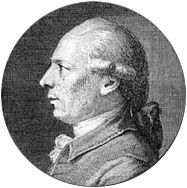Chess 101
- Introduction to Chess
- Rules of the Game
- Tactics
- Strategy & Planning
- Advanced Endgame Techniques
- Planning & Execution
- Notable Games Analysis
- Chess Psychology
- Training & Improvement
Endgame Basics
Understanding Rook Endgames

Several positions in chess endgames.
Rook endgames are among the most common and complex endgames in chess. They require a deep understanding of specific positions and principles. This unit will delve into the basic rook and pawn endgame positions, the concept of active and passive rooks, and the importance of king activity in rook endgames.
Basic Rook and Pawn Endgame Positions
In rook endgames, the position of your rook and king, as well as the pawn structure, are crucial. Two key positions to understand are the "Lucena Position" and the "Philidor Position".
-
Lucena Position: This is a winning position for the side with the pawn. The key to winning is to correctly position your rook and king to shield against checks and promote the pawn.
-
Philidor Position: This is a drawing position where the defending side uses their rook to cut off the opposing king, preventing it from supporting its pawn's promotion.
Active and Passive Rooks
In rook endgames, the activity of your rook is paramount. An active rook is one that has a wide range of movement and can influence both the middle and the opponent's side of the board. A passive rook, on the other hand, is restricted in its movement, often stuck defending pawns or blocking the opponent's pawns.
-
Active Rooks: Try to make your rook active. An active rook can support your pawns, attack your opponent's pawns, and restrict the movement of your opponent's king.
-
Passive Rooks: Avoid having a passive rook. A passive rook is often a sign of a disadvantageous position. If your rook is passive, look for opportunities to activate it.
Rook versus Pawn Endgames
In rook versus pawn endgames, the side with the rook usually has the advantage. However, there are exceptions, especially when the pawn is close to promotion. The principle of "rook behind the pawn" is crucial here. This means that the rook should be placed behind the passed pawn, whether it's your pawn or your opponent's. This position allows the rook to support its pawn's promotion or stop the opponent's pawn from promoting.
King Activity in Rook Endgames
The king's role becomes increasingly important in the endgame. In rook endgames, an active king can support its pawns, attack the opponent's pawns, and help in creating threats. Try to centralize your king and keep it active.
In conclusion, understanding rook endgames is a complex but essential part of improving your chess skills. Remember to keep your rook and king active, understand key positions, and use these principles in your games.